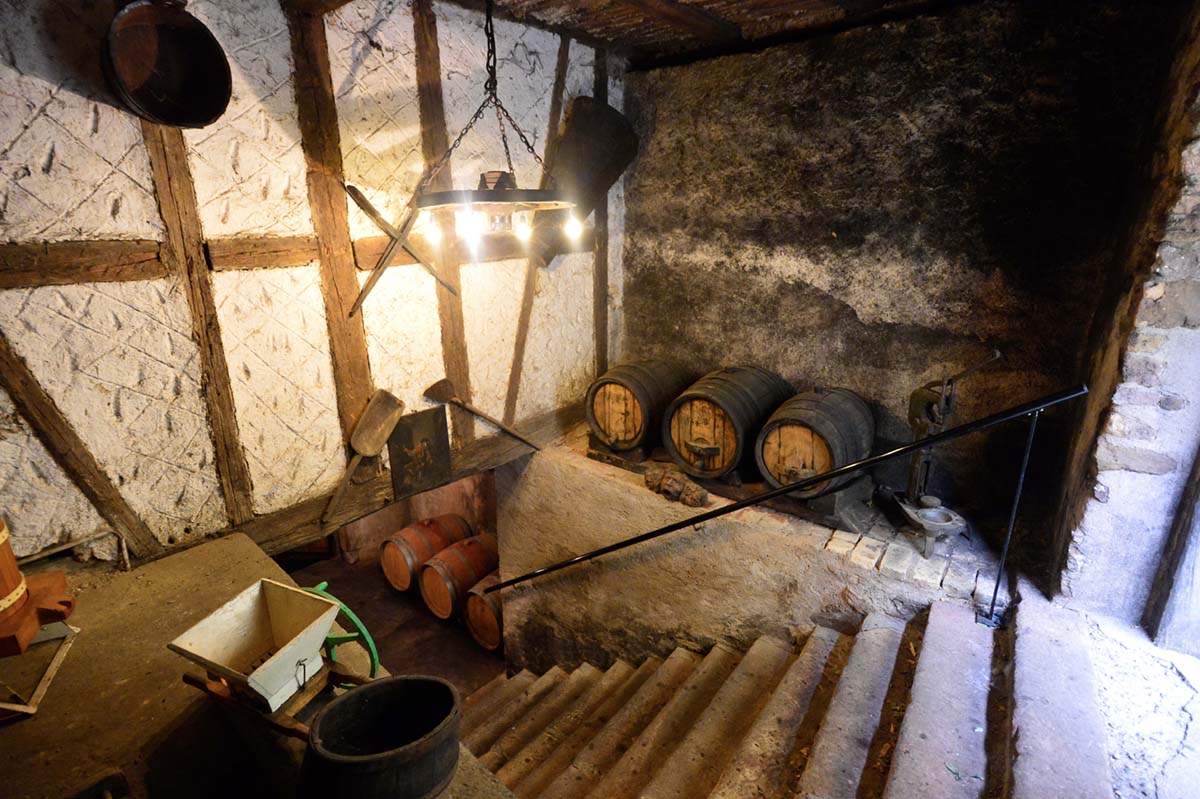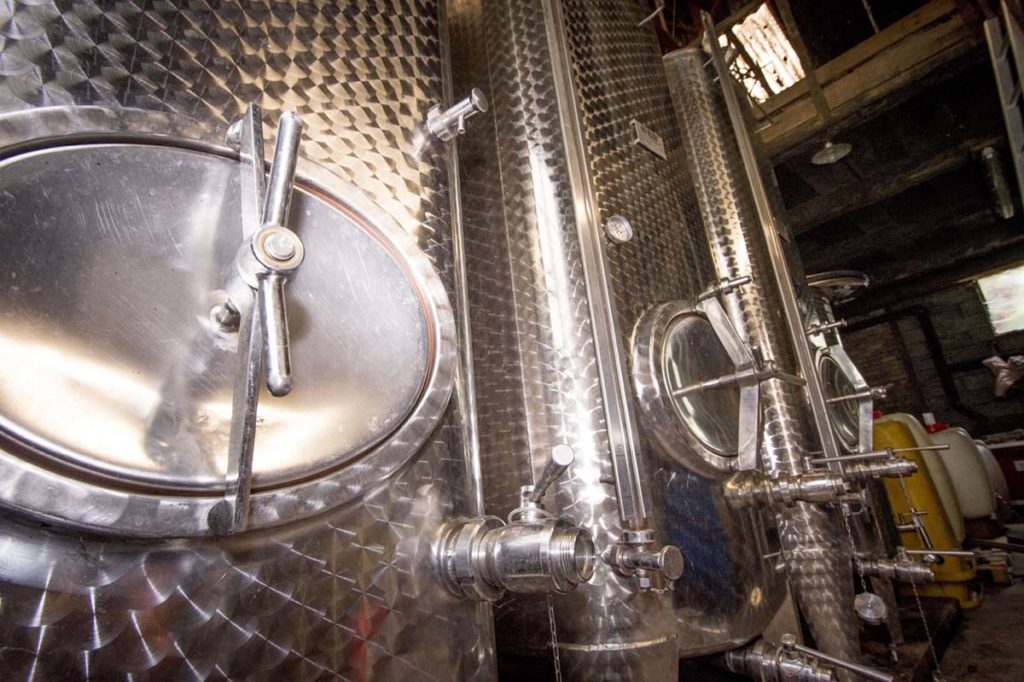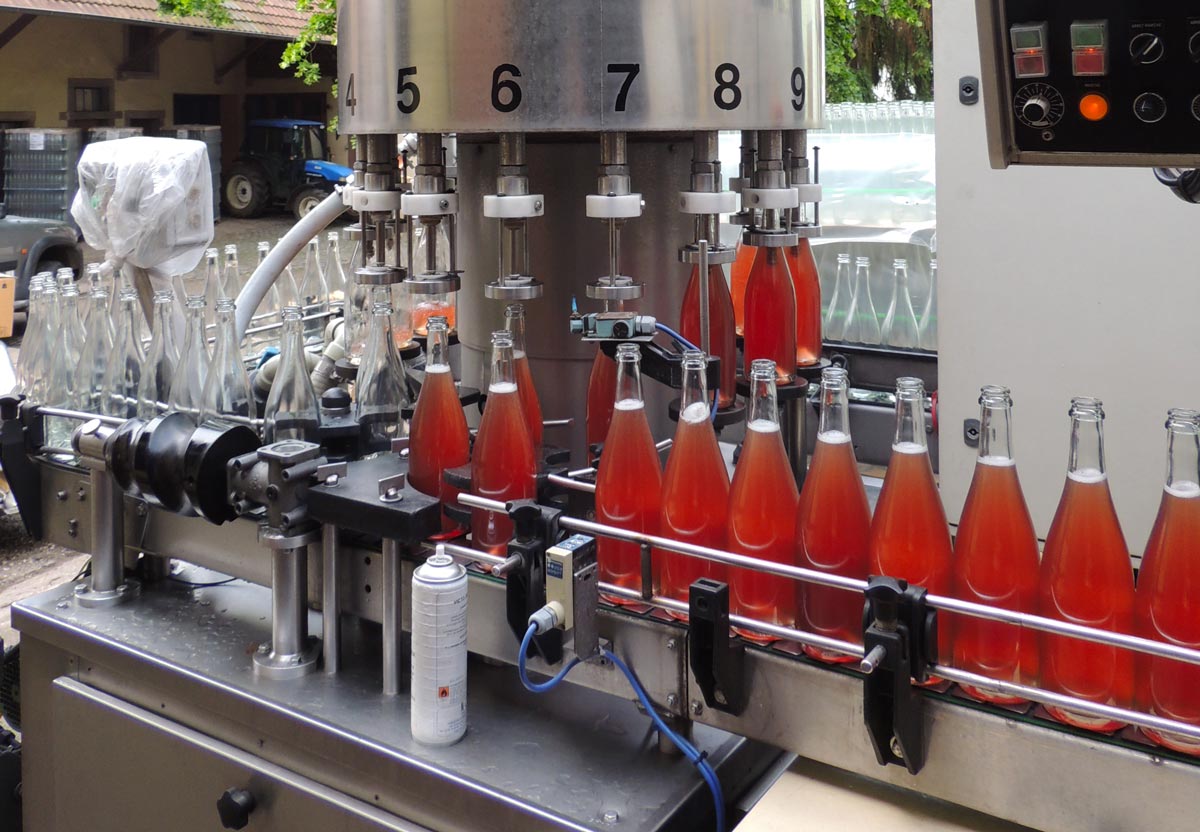Work in the cellar
The cellar work begins with the harvest.
On arrival of the trailers loaded with vats of grapes, the harvest is unloaded in whole grapes and conveyed on a belt to the press to be crushed as little as possible. This process is used for the manual harvest of crémants, but also for our cuvee and late harvests to which we take the greatest care.
The pressing operation then takes place over a period of 3 to 5 hours depending on the press program depending on the grape variety and the wines you want to obtain.


The grape juice, also called grape must, will spend 24 hours in a stainless steel tank where it is refrigerated; the settling operation will follow.
The settling is a delicate and very important operation.
It consists of separating the clear juices from the large particles, the more successful the operation, the better the quality of the wine.
The must is then pumped into the cellar, housed in oak barrels or vats, it will begin the fermentation stage.
Fermentation can start either with the addition of yeasts selected for the crémant and the Pinots Noirs where a quick start is sought, but also naturally in the musts thanks to the yeasts present in the grapes.
The must then turns into wine. Fermentation lasts for several weeks to several months, between harvest and winter. It will then be racked, that is to say transferred from one barrel to another in order to stop its fermentation. The wine is separated from its large lees made up of dead yeasts and fermentation sediments. This is the moment when the wine will improve during aging on fine lees, and mature.


At the end of winter, when the wine will have cleared up naturally, a first so-called coarse filtration will be carried out in order to remove the haze in suspension and give the wine finesse and a brilliant shine.
Bottling, the last step, is the culmination of all the work in the cellar. It is carried out from the beginning of spring, until the end of summer depending on the freshness and maturity of the wines that we want to obtain.
Storage will then continue in the bottle until marketing.





